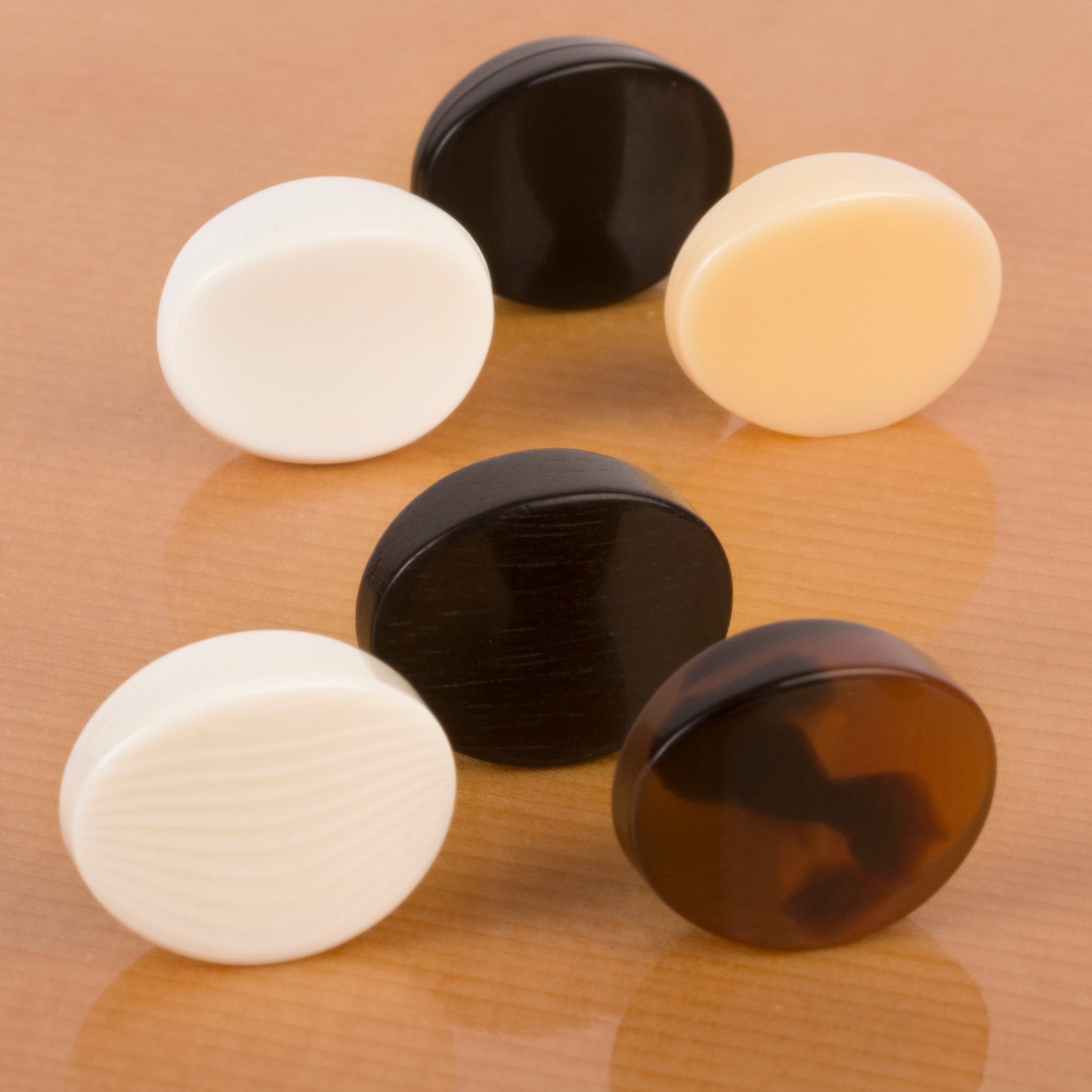Vintage Tuner Knobs
Instructions for installing replacement Vintage Tuner Knobs, including how to remove old tuner knobs.
Use our Vintage-style Tuner Knobs to replace the decomposing plastic knobs found on many vintage instruments. Our Vintage-style Knobs are also useful for creating a custom look. Replacing tuner knobs is a simple repair, but as with all repair jobs we recommend that you practice on inexpensive "yard-sale special" guitars to hone your repair skills. You wouldn't want to damage a rare vintage tuner as part of your learning curve. Carefully remove the tuners from the peghead. Keep an eye on the press-in bushings, which often drop out when tuners are removed. Clamp the tuner's string post securely into your vise with the baseplate flat on top of the jaws. Position the knob shaft so you have clear access to work on it. If the knob is crumbling, carefully break it off with pliers (don't bend the knob shaft). If you want to save the knobs, heat the shafts with a soldering iron and then slide them off. Don't heat the shaft longer than necessary, to avoid damaging the tuner's gears. It's a good idea to use a large copper alligator clip as a heat sink, positioning it between the soldering iron and the gears. As the knob begins to heat, pull it off with pliers. Pull it straight off, without twisting and deforming the hole. Wrap the knob with an old rag to protect it from the jaws of the pliers. Don't try to force the knob off. When the shaft is hot enough, the plastic will soften and the knob will slide off fairly easily. Remove the heat from the shaft as soon as the knob is off. As the shaft cools, clean away any remaining plastic with a scraper and wire brush. An alternate method is to soften the knob with a heat gun or by carefully suspending the knob in boiling water (don't immerse the tuner itself). Either of these methods will soften most knobs enough to remove them. Depending on the diameter of the knob shaft, you may have to enlarge the hole in the replacement knob to get a good fit. Often, the old plastic button covers a flat portion of the shaft that acts as a spline to hold the knob. This flattened spline is parallel to the flat sides of the knob. Some knob shafts are round with two flat sides. These flats align with the flat sides of the hole in the white, black and cream knobs. The Ivoroid Knob and the Ebony Knob are more difficult to attach because they are much harder materials, and their holes are round. Depending on the shaft you're fitting, you may need to use small files or a Dremel tool to modify the hole in the knob. Micro-chisels are also useful for shaping the hole to match the shaft. Also consider filing the shaft to help make a good fit between the shaft and the knob. When you have finished shaping the hole in the knob, you should be able to slide the new knob onto the shaft. Plastic and ivoroid knobs may need to have the shaft heated before putting the knob on (ebony knobs won't be helped by heating the shaft). Hold the knob with pliers, wrapping a small piece of cloth around the knob to protect it from the teeth of the pliers. Be consistent in how far you slide each knob on, so that the complete set of tuners are evenly spaced from the peghead. Create a simple depth stop with a notched piece of scrap wood placed around the shaft. The ivoroid knobs require more heat than the plastic knobs, and it's possible to damage or deform them by overheating. For this reason, we recommend that you have extra knobs on hand in case you damage one. Keep a wet rag nearby to cool the knobs (don't quench hot tuners in water — it can weaken the metal and crack the plastic). Ebony knobs need to be glued on, and you also might prefer to glue the ivoroid knob on rather than using heat. Use a gap-filling glue: epoxy is a good choice, and so is our #30 Thick Super Glue. By carefully shaping the hole in the knob to conform to the shaft, you'll get a secure fit. Reinstall the tuners after they have cooled.Tools needed
Remove the tuners
Remove the knob from the shaft
Fit the knob to the shaft
Using glue rather than heat
